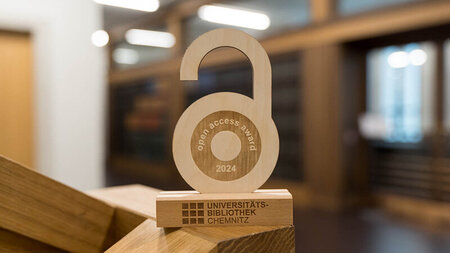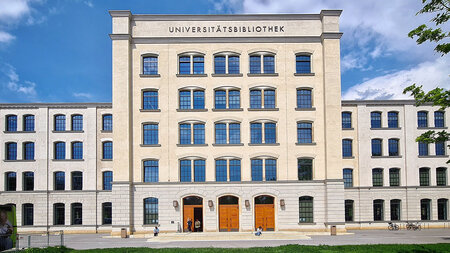Courses in the winter semester
News
General information
Prof. Dr. Sebastian Gechert
Tuesday (weekly) 1:45 p.m. - 3:15 p.m., room C25.146 (old: 2/W146) - Start: October 15, 2024
Objective of the lecture
This course covers advanced topics in environmental and ecological economics, with a focuson the macroeconomics of climate change. Topics like degrowth vs. green growth, the socialcosts of carbon, macro-financial risks and climate policies will be covered. Integrated ecology-macroeconomy models will be consulted and discussed critically. After successful completionof the course, students should be able to approach the related academic literature as well ascurrent policy debates. They should develop critical thinking to evaluate the scope and limitsof different economic theories / models for real world problems. Knowledge of basic concepts of macroeconomics, microeconomics and environmental economics is required.
Lecture outline
Chapters 1: Introduction
- Overview on Climate Economics
- Environmental Economics vs. Ecological Economics
- Required Readings: Nordhaus, W. D. (2018): Climate change: The Ultimate Challenge for Economics.Nobel Prize Lecture 2018; Røpke, I. (2005): Trends in the development of ecological economics from the late1980s to the early 2000s. In: Ecological Economics 55(2), pp. 262 - 290.
Chapters 2: Green Growth vs. Degrowth
- Limits to Growth
- Environmental Kuznets Curve
- The Kaya Identity
- Required Readings: Piper, K. (2021): Can we save the planet by shrinking the economy?; Hickel, J.; Kallis, G. (2020): Is Green Growth Possible? In: New Political Economy25 (4), S. 469 – 486.
Chapters 3: Climate-Economy Linkages
- From Emissions to Damages
- From Damages to Welfare
- The Social Costs of Carbon
- Required Readings: Wieners, C.E. (2018), God does not play DICE – but Bill Nordhaus does! EGU Blogs; Auffhammer, M. (2018): Quantifying Economic Damages from Climate Change. in:Journal of Economic Perspectives 32 (4): 33 - 52.
Chapters 4: Macro-Financial Risks
- Physical Risks
- Transition Risks
- Macroeconomic Impacts
- Required Readings: Andersson, M.; Baccianti, C.; Morgan, J. (2020): Climate change and the macroeconomy. In: European Central Bank occasional paper series, No. 243; Semieniuk, G.; Campiglio, E.; Mercure, J.; Volz, U.; Edwards, N. R. (2021): Lowcarbontransition risks for finance. In: WIREs Climate Change 12 (1).
Chapters 5: Feasible Policies
- Carbon Pricing
- International Coordination
- Public Policies
- Green Monetary Policy
- Required Readings: Interview with Stéphane Hallegatte (2023) at I4CE Blog on the use and abuse of abatement cost curves: I4CE Blog; Rosenbloom, D., Markard, J., Geels, F.W., Fuenfschilling, L. (2020): Opinion: Whycarbon pricing is not sufficient to mitigate climate change. in: Proceedings of the National Academy of Sciences of the United States of America 117 (16): 8664–8668.
Chapters 6: Climate-Macro Modeling
- Basic Requirements and Ingredients
- Neoclassical Integrated Assessment Models (IAMs)
- Post Keynesian Stock-Flow Consistent (SFC) Models
- Required Readings: Tsigaris, P., Wood, J. (2016): A simple climate-Solow model for introducing the economics of climate change to undergraduate students, in: International Review of EconomicsEducation 23: 65 – 81; Dafermos, Y., Nikolaidi, M. (2022). Assessing climate policies: an ecological stock-flowconsistent perspective, European Journal of Economics and Economic Policies
Literature
Basic Literature:
- Andersson, M.; Baccianti, C.; Morgan, J. (2020): Climate change and the macro economy(European Central Bank occasional paper series, 243).
- Auffhammer, M. (2018): Quantifying Economic Damages from Climate Change. in: Journalof Economic Perspectives 32 (4): 33 - 52.
- Bruckner, B., Hubacek, K., Shan, Y., Zhong, H., Feng, K. (2022): Impacts of poverty alleviationon national and global carbon emissions, in: Nature Sustainability 5 (4): 311 – 320.
- Dafermos, Y., Nikolaidi, M. (2022): Assessing climate policies: an ecological stock-flowconsistent perspective, European Journal of Economics and Economic Policies
- Harvey, H. et al. (2018): Designing Climate Solutions, Island Press.
- Hassler, J.; Krusell, P.; Nycander, J. (2016): Climate policy. In: Economic Policy 31 (87),S. 503 – 558.
- Hickel, J.; Kallis, G. (2020): Is Green Growth Possible? In: New Political Economy 25 (4),S. 469 – 486.
- Nordhaus, W. D. (2018): Climate change: The Ultimate Challenge for Economics. NobelPrize Chapter 2018.
- Røpke, I. (2005): Trends in the development of ecological economics from the late 1980sto the early 2000s. In: Ecological Economics 55(2), pp. 262 - 290.
- Semieniuk, G.; Campiglio, E.; Mercure, J.; Volz, U.; Edwards, N. R. (2021): Low-carbontransition risks for finance. In: WIREs Climate Change 12 (1).
- Stern, N. (2008): The Economics of Climate Change. In: American Economic Review:Papers and Proceedings 98 (2), S. 1 – 37.
- Tsigaris, P., Wood, J. (2016): A simple climate-Solow model for introducing the economicsof climate change to undergraduate students, in: International Review of EconomicsEducation 23: 65 – 81.
Additional Literature:
- Andre, P.; Chopra, F.; Boneva, T.; Falk, A. (2021): Fighting Climate Change: The Roleof Norms, Preferences, and Moral Values (IZA Discussion Paper, 14518).
- Dietz, S.; Rising, J.; Stoerk, T.; Wagner, G. (2021): Economic impacts of tipping pointsin the climate system. In: Proceedings of the National Academy of Sciences of the UnitedStates of America (early online).
- Farmer, J. D.; Hepburn, C.; Mealy, P.; Teytelboym, A. (2015): A Third Wave in theEconomics of Climate Change. In: Environmental and Resource Economics 62 (2), S.329 – 357.
- Grubb, M.; Wieners, C. (2020): Modeling Myths: On the Need for Dynamic Realism inDICE and other Equilibrium Models of Global Climate Mitigation (INETWorking Papers,112).
- Hardt, Lukas; O’Neill, Daniel W. (2017): Ecological Macroeconomic Models: AssessingCurrent Developments. In: Ecological Economics 134, S. 198 – 211.
- Nordhaus, W. D.; Moffat, A. (2017): A Survey of Global Impacts of Climate Change:Replication, Survey Methods, and a Statistical Analysis. Cambridge, MA (NBER workingpaper, 23646).
- Pindyck, Robert (2013): Climate Change Policy: What Do the Models Tell Us? Cambridge, MA.
- Rezai, A.; Stagl, S. (2016): Ecological macroeconomics: Introduction and review. In: EcologicalEconomics 121, S. 181 – 185.
- Tol, R. S. J. (2018): The Economic Impacts of Climate Change. In: Review of EnvironmentalEconomics and Policy 12 (1), S. 4 – 25.
- Weitzman, M. L. (2009): On Modeling and Interpreting the Economics of CatastrophicClimate Change. In: Review of Economics and Statistics 91 (1), S. 1 – 19.
News
We would like to draw your attention to the possibility of taking part in an excursion. For more information, check out our News
General information
Prof. Dr. Sebastian Gechert (Lecture)
Dr. Bianka Mey (Tutorial)
Thursday (weekly) 9:15 a.m. - 10:45 a.m, Room C25.146 (alt: 2/W146), start: 17.10.2024
Tuesday (fortnightly) 11:30 a.m. - 1:00 p.m, Room C25.146 (alt: 2/W146), start: 12.11.2024
Objective of the lecture
This course focuses on advanced topics in macroeconomics. Students learn about thestylized facts and different theories of growth, development, business cycles and macroeconomic policies. Models of various schools of economic thought will be critically discussed and compared to each other. After successful completion of the course, students should be able to approach the related academic literature as well as current policy debates.They should develop critical thinking to evaluate the scope and limits of different economic theories / models for real world problems. Knowledge of basic concepts of macroeconomics and microeconomics is required. Students should have completed therespective introductory courses.
Lecture outline
Lecture 1: Stylized Facts
- Stylized Facts of Long-Term Growth
- Stylized Facts of Business Cycles
Lecture 2: Overview of Macroeconomic Theories
- Overview of Macroeconomic Theory
- Alternative Modeling Approaches
Long-Term Growth
Lecture 3: Basic Neoclassical Growth Models: Solow & Ramsey
- Properties and Equilibrium
- Golden Rule Growth
- Intertemporal Optimization and Dynamics
Lecture 4: Technical Change and Neoclassical Endogenous Growth
- Technological Change
- Exogenous Tech Change in Solow
- Neoclassical Endogenous Growth Models
- Biased-Technical Change
Lecture 5: Education, Institutions and Social Infrastructure
- The Malthusian Trap
- Education and growth
- Institutions and growth
- Social infrastructure and growth
Lecture 6: Keynesian Demand-Constrained Growth Models
- Potential Output and Hysteresis
- Investment Demand and Saving Supply
Short-Term Growth
Lecture 7: The Neoclassical Synthesis
- The Neoclassical Synthesis
- The Dynamic AS-AD Model
Lecture 8: New Classical Real Business Cycle Models
- The New Classical School
- Properties of the RBC model
- Dynamics of the RBC model
Lecture 9: New Keynesian DSGE Models
- The New-Keynesian School
- Properties of the NK DSGE model
- Dynamics of the NK DSGE model
Lecture 10: Latest Developments and Macroeconomic Policies
- Heterogeneous Agents
- Effects of Monetary Policy
- Effects of Fiscal Policy
Literature
Basic Literature:
- Carlin, W., Soskice, D. (2024), Macroeconomics: Institutions, Instability, and Inequality,2nd Edition, Oxford University Press.
- Weil, D. (2016), Economic Growth, 3rd Edition, Taylor & Francis.
- Romer, D. (2018), Advanced Macroeconomics, 5th Edition, McGraw-Hill. OxfordUniversity Press.
Additional Literature:
- Blanchard, O. (2020), Macroeconomics, 8th Edition, Pearson.
- Foley, D.K., Michl, T.R., Tavani, D. (2019), Growth and Distribution, 2nd Edition,Harvard University Press.
- Lavoie, M. (2022), Post-Keynesian Economics: New Foundations, 2nd Edition,Edward Elgar.
- Snowdon, B. & Vane, H.R. (2005), Macroeconomics: Its Origins, Development andCurrent State, Edward Elgar.
General
General information
Prof. Dr. Sebastian Gechert
Dr. Bianka Mey
Teresa Müller, M. Sc.
Why you should take part
Attending this seminar can help you develop several skills such as critical thinking and speech as wellas presenting your outcomes, problem-solving, methodological expertise and deepened knowledge on thematter of economic inequality. You can also learn about the different types of inequality and how theyaffect heterogeneous groups of people. These skills are important in understanding the issues surroundinginequality and finding ways to address them, possibly helping you make a positive difference in yourcommunity or opens up exciting research avenues for future projects.
Topics & Requirements
see Opal-courseLiteratur
see Opal-course
Courses in the summer semester
News
General information
Prof. Dr. Sebastian Gechert
Dr. Bianka Mey
Wednesday (weekly), 13.45 - 15.15 Uhr, room 2/W146 (neu: C25.146), start April 10, 2024
Wednesday (14-daily, even week), 09.15 - 10.45 Uhr, room 2/W146 (neu: C25.146))
Objective of the lecture
The course is intended to give students an introduction into the measurement, causes, effects and policy implications of inequality of income and wealth. After successful completion of the course, students should be able to approach the related academic literature as well as current policy debates.
Lecture outline
Chapter 1: Introduction: Why we should care about inequality
Chapter 2: Measurement, Concepts, Data
- Functional and Personal Income Distribution, Wealth Distribution, Multidimensional inequality
- Inequality Indices
- Data availability, problems
Chapter 3: Causes of Inequality
- The Big Stories
- Specific Explanations
Chapter 4: Consequences of Inequality
- Societal Consequences
- Macroeconomic Consequences (Growth, Stability)
Chapter 5: Policy Implications
Literature
- Atkinson, A. (2015): Inequality What Can Be Done? Harvard University Press
- Atkinson, A. / Bourguignon, F.: Handbook of Income Distribution, Vol. 1 (2000), 2A, 2B (2014), Elsevier
- Chancel, L. / Piketty, T. (2021): Global Income Inequality, 1820-2020: The Persistence and Mutation of Extreme Inequality, World Inequality Lab – Working Paper 2021/19
- Lakner, C., Milanovic, B. (2013), “Global income distribution: from the fall of the Berlin Wall to the Great Recession”, World Bank Working Paper No. 6719
- Nolan, B. / Salverda, W. / Smeeding, T.M.: Oxford Handbook of Economic Inequality, Oxford University Press, 2011
- Roine, J., Waldenström, D. (2014), Long-Run Trends in the Distribution of Income and Wealth, in: Atkinson, A., Bourguignon, F. (eds.) Handbook of Income Distribution Vol. 2A.
- Villar, Antonio (2017). Lectures on Inequality, Poverty and Welfare. Springer.
Year-round events
General information
Prof. Dr. Sebastian Gechert
Dr. Bianka Mey
Teresa Müller, M. Sc.
after special announcement
Objective of the lecture
The colloquium serves as a forum for Master's students writing their thesis at the chair to present their work concept at an early stage and to defend it in the discussion in order to achieve a higher quality of work. The colloquium can also be used to discuss points that you are currently working on in your thesis, that you may be having problems with or that you simply want to get a range of opinions on.






